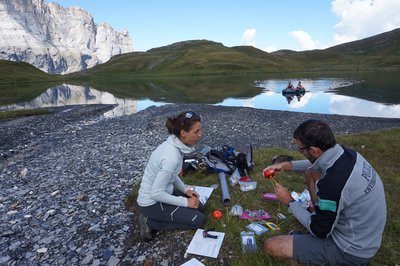Lac d'Anterne
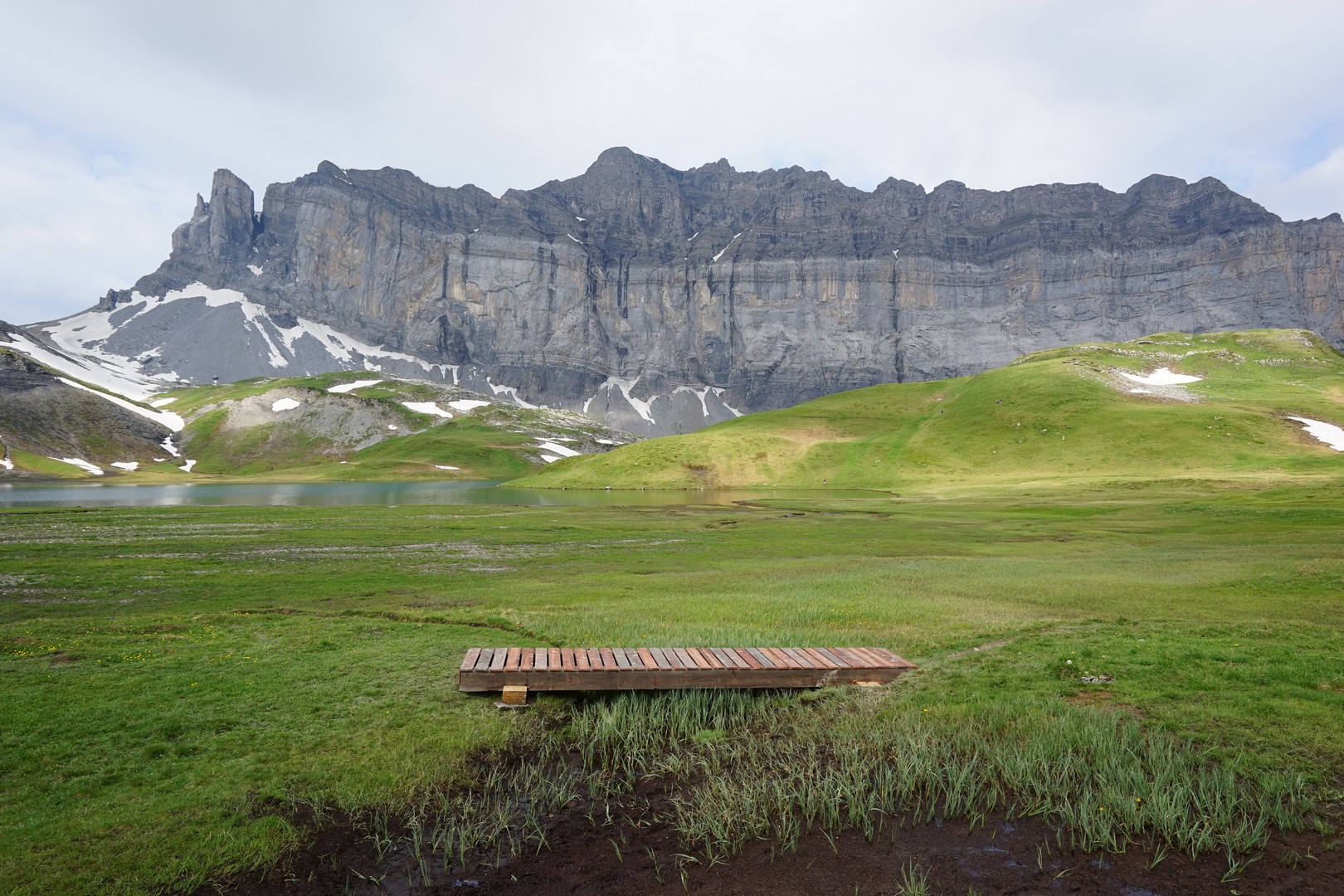
Passy
Lac d'Anterne
Medium
5h30
19km
+1198m
-1198m
Embed this item to access it offline
At Lac d'Anterne, you'll find yourself in a picturesque Alpine environment: crystal-clear waters, reflections of the cliffs, calm (tranquility) and green pastures.
Attachment
- Downloadpdf
lac-danterne
Credit: Points d'intérêts du parcours - Asters-CEN74
24 points of interest
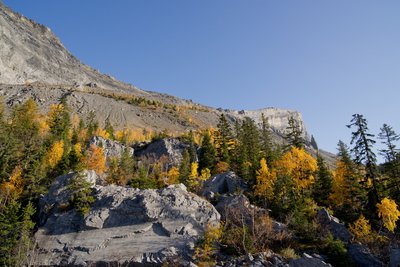
Le Dérochoir à l'automne - Julien Heuret - CEN 74 
Overlooking the Dérochoir
The Dérochoir is the product of a series of landslides. The first known and documented landslide dates back to 1471. The second and last, for the time being, was in 1751. At the foot of the cliff is a huge landslide cone that forms an unsteady slope. These landslides made it possible to cross the Barre des Fiz.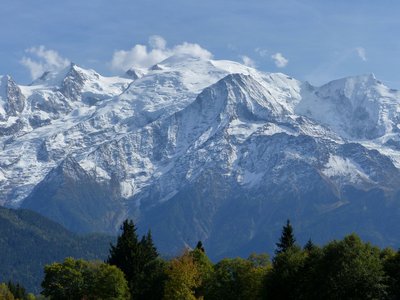
Panorama sur le Mont-Blanc depuis Plaine-Joux - Lucie Rousselot - CEN 74  Peak
PeakThe mont Blanc before the rise of mountaineering
A lot of mountaineers have dreamt of climbing Mont Blanc, the highest peak in Western Europe. But this has not always been the case. In the past, the mountains instilled fear and superstition in their local inhabitants, as evidenced by the names given to the summits ("cursed mountain", "devil's spikes"...). Only shepherds, chamois hunters and stonemasons (extractors of rock crystals) frequented these hostile areas. The first ascents were made by daring foreigners who hired these experienced mountaineers to provide guidance.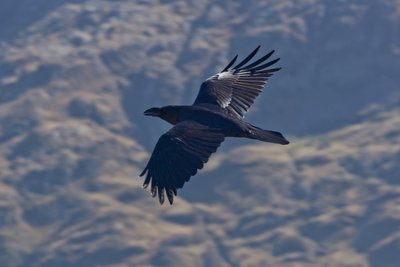
Grand corbeau en vol - Julien Heuret - CEN 74  Fauna
FaunaThe Common Raven
It is the largest of the passerines and corvids! Whether feared or revered, it is the subject of myths and legends in many cultures. Once hated and hunted, it is now protected. About the size of a buzzard, it can be recognised by its diamond-shaped tail and its throaty screech. It is an omnivore, which means it feeds on carcasses, eggs, chicks and berries! The couples, bound together for life, perform high-flying courtship displays! Apart from humans, its only predator is the golden eagle.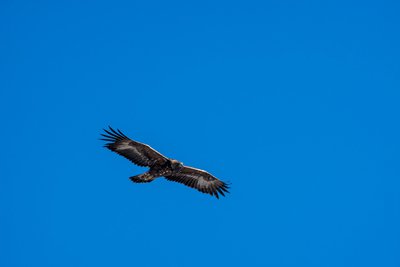
Aigle royal en vol - Julien Heuret - CEN 74  Fauna
FaunaThe Golden Eagle
It's a predator, armed for the hunt! Thanks to its large, wide wings, it glides high into the sky in search of prey. Its exceptional eyesight spots marmots (its favourite meal), hares, foxes or ptarmigan, and sometimes even young chamois or ibex! Its prominent eyebrow arch acts as a sun shield when it swoops down to snatch its prey. It is equipped with talons for grabbing and a powerful, hooked sharp beak for tearing flesh.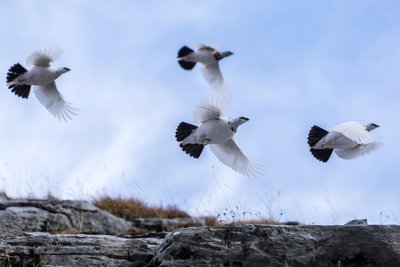
@JulienHeuret  Fauna
FaunaThe rock ptarmigan
This species, gifted with an exceptional ability of mimicry, is able to alter its plumage between the summer and winter seasons in order to blend in with its environment. In winter, its plumage is plain white; in summer, there are brown and black patches on top; in autumn: greyish with white patches on top. Its name, which means "hare's foot", comes from the fact that its feet are covered in thick fluff during winter! It is one of the most endangered birds in the Alps. In the Haute-Savoie nature reserves, populations are monitored every year to assess changes in numbers, with the help of the " Observatory of Mountain Galliformes ".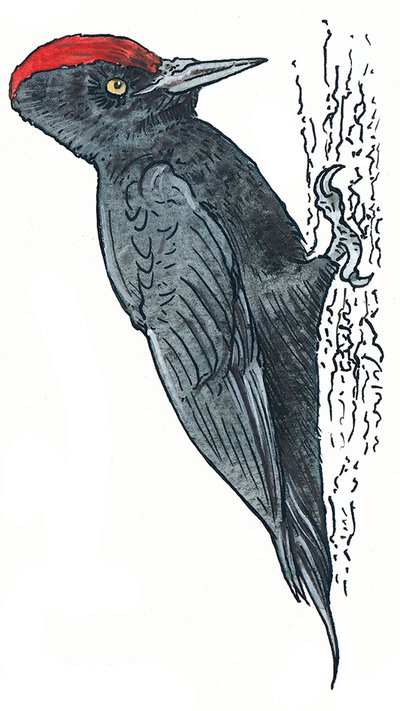
Pic noir  Fauna
FaunaThe Black Woodpecker
It is the largest of the 8 woodpecker species found in France. Originally an exclusively mountain-dwelling species, it now can also be found in the valleys! The Black Woodpecker adapts equally well to deciduous and coniferous forests, as long as they are large enough and have large-diameter old trees and some dead wood left. It is easily recognised by its entirely black plumage enlivened by a bright red spot, limited to the nape on the females and more extensive on the males.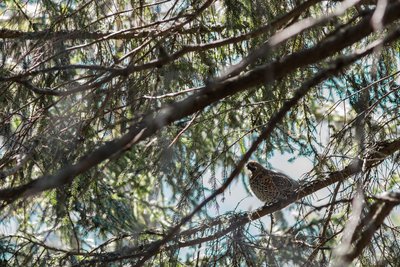
Gélinotte des bois - Julien Heuret - CEN 74  Fauna
FaunaThe Hazel Grouse
This is the smallest and most elusive of the mountain Galliformes species. It is much less well known than the black grouse or the rock ptarmigan because it lives exclusively in the forest! But it is just as important from a biological and scientific point of view: this species is an excellent indicator of environmental change. Its specific requirements in terms of vegetation and variety of tree species put it at risk in the face of poor forest management. This is one of the main causes of the species' decline.
Marmotte - Frank Miramand - CEN 74  Fauna
FaunaWhistly song of a marmot
The Marmot is the favourite food of the Golden Eagle and, to a lesser extent, of the Fox. Always alert, the marmot surveys its surroundings to avoid being caught. Standing upright on its paws, its iconic stance reminds of a candle atop of a chandelier. Thanks to its very wide field of vision and its highly effective hearing and sense of smell, nothing escapes its notice. In the event of an emergency, it warns others with an audible cry: high-pitched and brief in the case of an airborne hazard, whistled and repeated in the case of a ground hazard. And that danger can be you!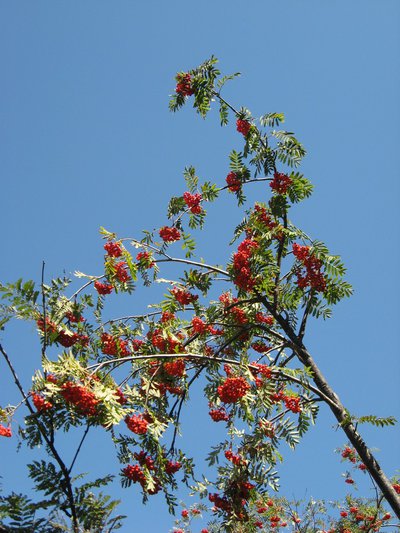
Sorbes - Julien Heuret - CEN 74  Flora
FloraThe Mountain Ash
It is a small tree that grows on the edge of forests. Its fruit, called "sorbs", are orangey red berries that are very popular with thrushes and blackbirds. They can be used to make brandy, jelly, or jam. Just make sure you pick them before they are ripe, otherwise, they may become toxic! In the reserve, the mountain ash is being studied as part of a collaborative science programme designed to measure the impact of climate change in the mountains.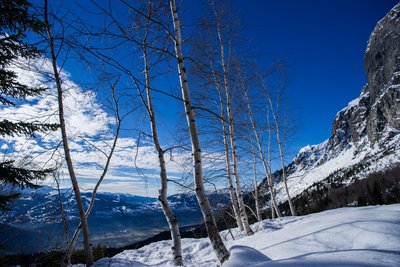
Bouleaux en hiver - Julien Heuret - CEN 74  Flora
FloraThe Downy Birch (Betula pubescens)
There are four species of birch in Europe, and the one growing here is the downy birch. There are many proven medicinal properties of its sap and bark, such as natural detox properties and its ability to remedy rheumatism, fatigue and allergies! In the reserve, the birches are monitored as part of the "Phénoclim" programme set up by CREA to measure the impact of climate change on the life cycle of plants.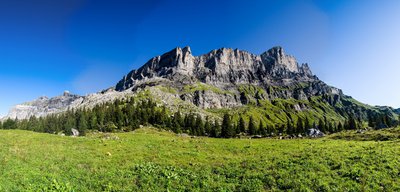
Les Fiz depuis les Ayères - Julien Heuret - CEN 74 
The 'Ayères'
The word "Ahier" originally comes from the Roman dialect for sycamore maple. The terms "pierrières" and "roc" come from the many boulders that formed during the rockslides at Dérochoir, including the one in 1751 that killed 6 people and a few domestic animals. All these cottages were mountain chalets used for farming. Now they are used as vacation homes.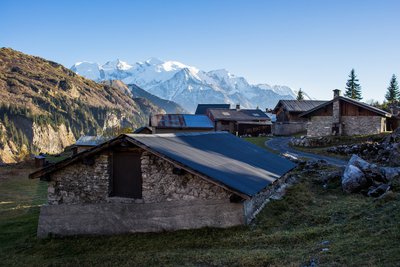
Chalets d'Ayères - Julien Heuret - CEN 74 
Architecture of alpine cabins
Some of the mountain shepherd cabins are over a century old.
The construction of sturdy high-altitude cabins is driven by its harsh immediate environment. Such cabins must feature stone walls and a spruce frame that can withstand deadly winter conditions!
Originally, the roof was covered with "tavaillons", a type of French traditional wooden tiles.
These buildings, used for farming in the summer months, were rudimentary and provided shelter for the shepherd and their family.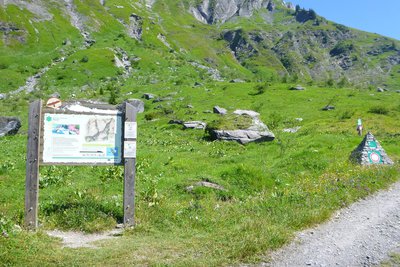
La porte d'entrée de la réserve - Julien Heuret - CEN 74 
The history of the Passy nature reserve
In the 1970s, the wealth of natural areas in Haute-Savoie was the subject of much interest. As developers grew increasingly ambitious and numerous tourist developments were planned, people began to raise concerns. The French government decided to create 9 national nature reserves. In 1974, the Aiguilles Rouges national nature reserve was created, followed by the Sixt-Fer à Cheval/Passy nature reserve in 1977. Between these two protected natural areas lay a small portion of land, which became the Passy nature reserve in 1980.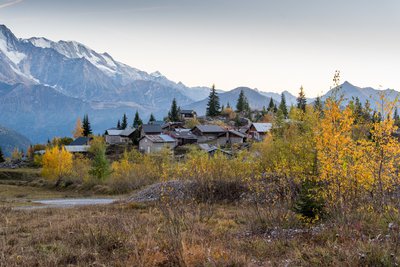
Chalets d'Ayères à l'automne - Julien Heuret - CEN 74 
The alpine cabin
The alpine cabine is a small building which, gattered with others, forms a small hamlet.
These constructions were originally intended for the organization of agricultural life in the mountains. These cabins were used in the summer to shelter the shepherds and their family. They were also used for milking and the production of cheese and other dairy products.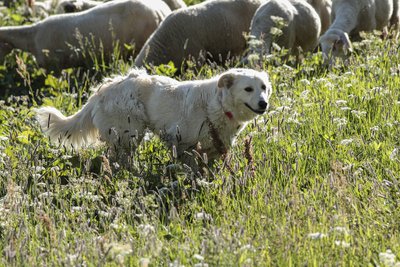
Chien de protection des troupeaux - Geoffrey Garcel - CEN 74 
Livestock guardian dogs
These are guardian dogs, so their use is permitted in nature reserves. They are there to defend sheep and lambs from attacks by large predators, such as wolves. Often large in size, these dogs, known as "molossoids", dedicate their lives to protecting the livestock to which they are deeply attached. When approaching the herd, it is important to remain aware of their attitude and to adapt to it, while following simple instructions: - Keep your distance from the herd (go around it if possible) - Call out loudly to the herds and dogs to avoid surprising them - Stay calm and avoid sudden movements, keep walking without running. Don't hesitate to speak softly to them so that they get used to you and accept your presence. - Avoid looking dogs in the eyes and try to ensure that you always have an object or an obstacle between you and the dog.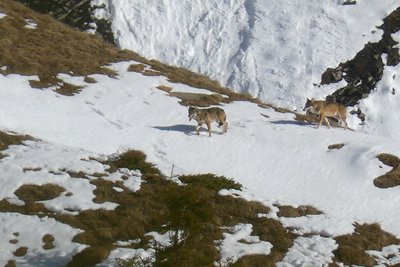
Loup gris - Anne-Laure Martin  Fauna
FaunaThe wolf
Wolves have been making a comeback in France on their own since the 1990s. Originating in Italy, the species first colonised the southern Alps, then the entire Alpine region. Since the summer of 2019, its presence has been confirmed in some of the Haute-Savoie nature reserves, which is why guard dogs are kept around several herds. The wolf is a carnivore. It feeds mainly on wild animals such as chamois and roe deer. But it can also eat sheep, especially when the herds are not guarded. To avoid interfering with the dogs' duties, please follow the instructions!
Alpage de Moëde - Julien Heuret - CEN 74 
Mountain pastures, a mountain tradition
The mountain pasture is a mountain meadow intended to feed livestock (cows, sheep, goats, etc.) during the summer, while the meadows in the valley, which are more accessible, are used for mowing (cutting the grass). The grass, once dried, becomes hay that can be kept for a long time. Livestock will be fed on hay during the winter.
The breeding of milk producing cows was once a tradition. Nowadays, in the Passy Nature Reserve, you can find rather large herds of sheep for meat production.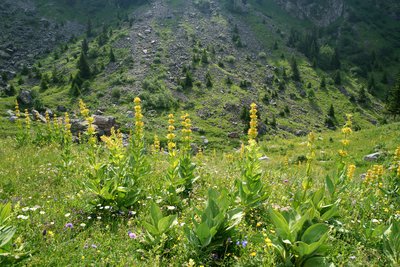
Gentiane jaune - Julien Heuret - CEN 74  Flora
FloraThe Great yellow Gentian
This large perennial plant, over 1 m high, can be found in meadows, moorland and forest clearings in the mountain and sub-alpine regions. It is used in phytotherapy, but should not be confused with the highly poisonous white alder, which it grows alongside of and closely resembles! The only difference lies in the flowers. Gentian flowers are yellow. Outside the blooming season, you should take a closer look at the leaves. Gentian leaves face each other on the stem, while adler leaves are on opposite sides of the stem.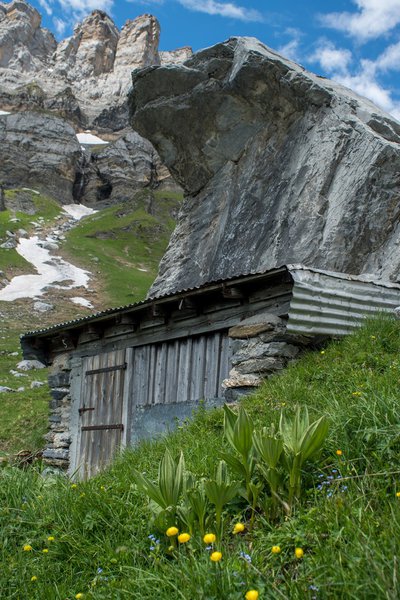
La cabane à Tintin et la pierre à l'ours - Julien Heuret - CEN 74 
Tintins cabin
This cabin, which is more of a shepherd's shelter, was built under "La Pierre à l'Ours". It served as a shelter for a shepherd looking after his herd here until the 1960s. In 1959, the shepherd was only 14 years old and watched over 2000 sheep. But where is the bear? To find it, move to the side of the stone and look carefully, it's there!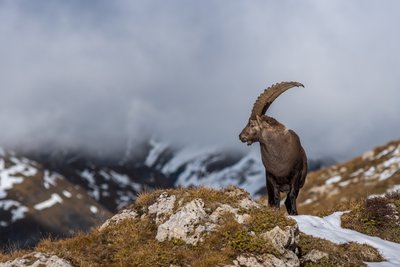
Bouquetin mâle - Julien Heuret - CEN 74  Fauna
FaunaThe Alpine Ibex
This now protected species almost disappeared from the Alps at the end of the 19th century, mainly as a result of hunting and poaching. Successive reintroductions throughout the Alps have helped to increase population numbers, although the species remains threatened to this day. In the reserve, the ibex are monitored to ensure their health and to ensure better management of the species' populations.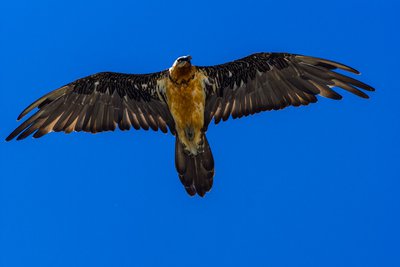
Gypaète barbu adulte - Julien Heuret - CEN 74  Fauna
FaunaThe Bearded Vulture
It's a symbol of our mountains. Just as famous and fragile as the Alps! Almost completely decimated at the beginning of the 20th century, it owes its comeback to the work of passionate and relentless ornithologists. If you're lucky enough to spot one on your walk, you should know that it is the result of the largest animal reintroduction programme in Europe! And don't worry, it's a scavenger that feeds mainly on bones.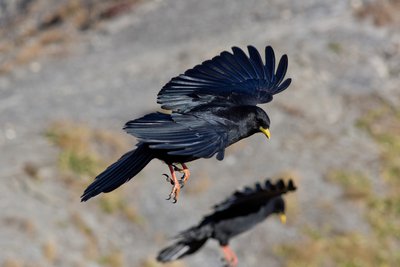
Deux Chocards à bec jaune en vol - Julien Heuret - CEN 74  Fauna
FaunaThe Alpine Chough
This well-known mountain predator lives mainly in large, noisy flocks, with impressive headcounts, especially in winter, when snowfall at high altitudes forces it into the valleys to find food! It is often mistakenly referred to as a "jackdaw", when in fact it is a completely different species of corvid, which is more likely to be found on the lowlands! The chough can be recognised by its black plumage, lemon-yellow beak and red feet. It is an avid aerobatic performer, and you'll no doubt be amazed by their acrobatic manuevers!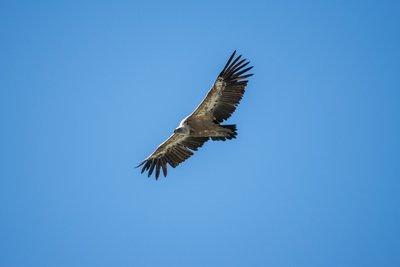
Vautour fauve - Julien Heuret - CEN 74  Fauna
FaunaThe Griffon Vulture
It is a frequent summer visitor to Haute-Savoie. The species is monogamous, in other words couples stay together for life! This bird lives in colonies of relatively big colonies, the nearest of which are in the southern Vercors. It is mainly the young individuals that explore new territories. To feed, this bird is also capable of covering hundreds of kilometres by gliding, provided the weather conditions are favourable.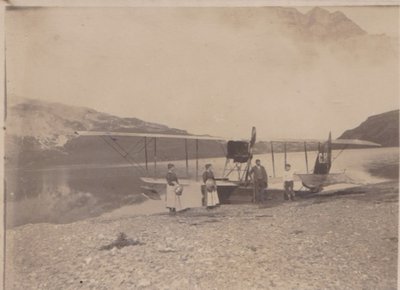
Hydravion au lac d'Anterne - Archive - Collection Jean Sesiano 
A Swiss hydroplane on the lake of Anterne
In August 1920, a hydroplane left Lausanne, on the shores of Geneva lake, to fly over the Alps.
The aircraft, which had just been overhauled, had engine trouble above the Chamonix valley. The pilot noticed the lake of Anterne and estimated that he could land there, which he succeeded. The lake being too small, the plane, even repaired, could not take off again. The engine was removed, and taken down to the valley, and the abandoned hydroplane gradually disintegrated.
Description
Depart from the Maison de la Réserve naturelle de Passy. Take the paved road that passes in front of the "Lou Pacheran" restaurant. Take the track up towards the Col d'Anterne. Marker 102. Continue on the track towards the Col d'Anterne. Marker 103. Continue straight ahead on the track towards Ayères des Pierrières, Col d'Anterne. Marker 16. Go straight through the hamlet of Ayères des Pierrières. Turn left onto the track towards the refuge de Moëde-Anterne, Col d'Anterne and Lac d'Anterne. Marker 121. At the pond, either continue on the track or take the path straight ahead (pedestrian shortcut). Be careful, it's an exposed vertiginous path! Marker 134. Turn left onto the path towards the Col d'Anterne. Go straight on towards the Col d'Anterne. To return, take the same route towards Plaine-Joux. Marker 100.
- Departure : Maison de la Réserve naturelle de Passy
- Arrival : Maison de la Réserve naturelle de Passy
- Towns crossed : Passy
Altimetric profile
Sensitive areas
Along your trek, you will go through sensitive areas related to the presence of a specific species or environment. In these areas, an appropriate behaviour allows to contribute to their preservation. For detailed information, specific forms are accessible for each area.
- Impacted practices:
- Aerial, , Land, Vertical
- Contact:
- Asters - Conservatoire d'espaces naturels de Haute Savoie
contact@cen-haute-savoie.org
Recommandations
Always exercise caution and plan ahead when hiking. Asters, CEN 74 cannot be held responsible for any accident or incident that may occur on this trail.
Transport
Bus SAT Mont-Blanc L85
Access and parking
Get to the Passy Plaine-Joux resort via the D43 road. Car park at the entrance to the resort. Bus line L85 (SAT Mont-Blanc).
Parking :
Plaine Joux
Report a problem or an error
If you have found an error on this page or if you have noticed any problems during your hike, please report them to us here:
